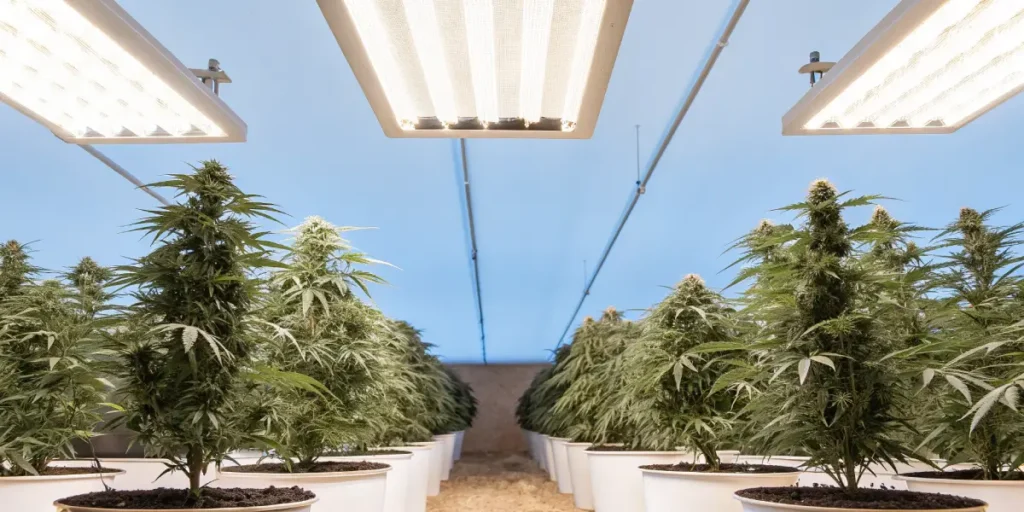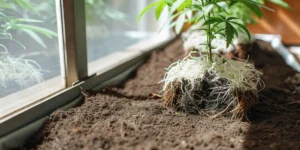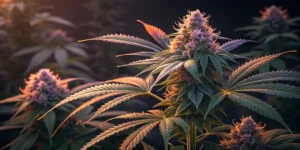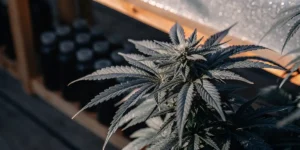Auto Kerosene Krash is an autoflowering cannabis strain known for its potent aroma and robust growing characteristics. Cultivating this strain can be a rewarding experience for growers of all skill levels, given its hardiness and relatively short lifecycle. To start, ensure you have quality auto Kerosene Krash seeds, as this will set a strong foundation for your grow. Choose a trusted supplier and inspect seeds for uniformity in color and size. Once you have your seeds, store them in a cool, dark place until you’re ready to begin germination.
Before planting, prepare your growing area. Auto Kerosene Krash thrives in a stable environment with consistent temperatures ranging between 70-85°F (20-30°C). Optimal humidity levels should be maintained at around 40-50%. This strain performs well in both soil and hydroponic setups, though soil methods are recommended for beginners due to ease of nutrient management. Choose a high-quality, well-draining potting soil if you opt for this method, and consider adding perlite or coco coir to enhance aeration.
Germinate your seeds using the paper towel method or by placing them directly in the growing medium. Keep them in a warm, moist environment until they sprout. Once seedlings emerge, ensure they receive adequate light. Auto Kerosene Krash benefits from a light cycle of about 18-20 hours daily, promoting vigorous growth. LED or fluorescent grow lights are excellent choices, providing full-spectrum light with minimal heat output. Adjust the lights to maintain an optimal distance from the canopy, typically 18-24 inches, to prevent light burn.
As your plants mature, pay careful attention to their feeding schedule. Autoflowering strains are typically smaller and require fewer nutrients, so begin with half-strength nutrient solutions and closely observe how the plants respond before increasing. Auto Kerosene Krash prefers a balanced nutrient regimen, particularly during the flowering stage, with an emphasis on phosphorus and potassium to encourage bud development. Water your plants when the top inch of soil feels dry, being careful to avoid overwatering, which can lead to root rot.
Monitor your plants throughout their lifecycle, watching for signs of stress or illness. Pests and diseases can be managed through preventative practices, such as maintaining cleanliness and using organic pesticides sparingly. In approximately 8-10 weeks from germination, your auto Kerosene Krash plants should be nearing harvest. Look for visual cues: The pistils should darken and curl, and the trichomes must appear milky white or amber, indicating ripeness. Harvest promptly to maximize the unique flavor and potency that auto Kerosene Krash offers.
Auto kerosene krash Strain Overview: Traits, Effects & Genetics
Auto Kerosene Krash is an intriguing strain that seamlessly combines unique traits and potent effects, making it a favorite among cannabis growers and users alike. Known for its resilience and robust growth, this autoflowering strain simplifies the cultivation process while offering generous yields. It’s an excellent choice for both novice and experienced growers who seek a strain that delivers quality without demanding extensive maintenance. The strain is appreciated for its compact structure, typically reaching a moderate height, which makes it adaptable to various growing environments, whether indoors or outdoors.
The genetic makeup of Auto Kerosene Krash is a sophisticated blend of powerful parents. It originates from a cross between the original Kerosene Krash and an autoflowering lineage, imbuing it with stability and vigor. This genetic background gives the strain a strong foundation, ensuring it inherits desirable traits such as high resin production and a relatively short flowering period. The strain typically completes its lifecycle within 9-10 weeks, from seed to harvest, making it a viable option for growers looking to maximize production in a limited timeframe.
On the effects front, Auto Kerosene Krash is celebrated for its potent and long-lasting impact. Users often report a profound sense of relaxation accompanied by an uplifted mood and increased creativity, making it ideal for unwinding or engaging in artistic pursuits. The strain’s high THC levels underscore its reputation for delivering a powerful cerebral and physical experience. Its complex terpene profile contributes to an alluring aroma, reminiscent of fuel and earthy undertones, which enthusiasts find both invigorating and soothing to the senses.
Overall, Auto Kerosene Krash combines the best of both worlds with its easy-to-grow nature and impressive effects. Its genetic excellence and the resulting balance of traits have made it a standout in the world of cannabis strains. For those looking to explore a strain with unique characteristics and robust effects, Auto Kerosene Krash is a promising addition to any garden or personal collection.
Optimal Environment to Grow auto kerosene krash Successfully
Auto Kerosene Krash is an impressive autoflowering variety valued for its robust diesel aroma, potent effects, and ease of cultivation. To maximize its potential, providing an optimal growing environment is essential. This strain thrives in both indoor and outdoor setups, but like all cannabis plants, it flourishes best under specific conditions. Here we explore the ideal parameters to ensure your Auto Kerosene Krash plants grow strong and yield bountifully.
When cultivating Auto Kerosene Krash indoors, maintaining a stable temperature is vital. Aim for a range of 70-85°F (21-29°C) during the day and slightly lower temperatures at night. This will prevent heat stress and encourage vigorous growth. Humidity levels should be kept between 40-60% during the vegetative stage, gradually decreasing to 40-50% during the flowering period to minimize the risk of mold and other pathogens.
Lighting is another critical factor in the successful cultivation of Auto Kerosene Krash. This strain appreciates a robust light schedule. LED lights are recommended due to their efficiency and effectiveness. Maintain an 18/6 light cycle (18 hours of light and 6 hours of darkness) throughout the entire growth period. This replicates the natural light conditions ideal for autoflowering cannabis and ensures steady development.
Providing adequate nutrition is essential for the health of Auto Kerosene Krash plants. Utilize a balanced nutrient regimen, beginning with higher nitrogen levels during the vegetative phase and gradually shifting toward a formula with higher phosphorus and potassium levels during flowering. Organic supplements or boosters like bat guano or worm castings can enhance soil quality and plant vitality.
Finally, ensure proper airflow and air exchange within your growing area. Fans are indispensable in preventing stagnant air, which can lead to issues like mold and pests. Fresh air supply via ventilation helps to stabilize indoor climate conditions, making your environment well-suited for cultivating Auto Kerosene Krash successfully. By managing these essential factors, you can expect a healthy crop brimming with the signature pungent aroma and powerful effects this strain is known for.
Grow Room Setup for auto kerosene krash Plants
The Auto Kerosene Krash strain, with its distinctive aroma and potent effects, requires a carefully optimized grow room setup to achieve the best results. This autoflowering variant is known for its robustness and relative ease of cultivation, making it suitable for both beginner and experienced growers. The foremost consideration in setting up a grow room for Auto Kerosene Krash is choosing the right space. Whether it’s a dedicated room or a grow tent, ensure the area is clean, ventilated, and capable of maintaining a stable environment conducive to growth.
Lighting plays a crucial role in nurturing Auto Kerosene Krash plants. These plants thrive under full-spectrum LED grow lights, which provide the intensity and spectrum balance necessary for robust vegetative growth and optimal flowering. Position the lights approximately 18-24 inches above the plants during the early stages, adjusting as the plants grow taller to prevent light burn while ensuring adequate light penetration. A timer can automate lighting schedules, maintaining a consistent 20 hours on and 4 hours off cycle to maximize growth potential without overwhelming the plants.
Temperature and humidity are vital factors to control in the grow room setup. Auto Kerosene Krash plants prefer daytime temperatures between 70-85°F (21-29°C) during the light period and slightly cooler temperatures at night. Maintaining humidity levels around 40-50% during the vegetative phase will support optimal growth, while lowering it to 30-40% during flowering can prevent mold and encourage resin production. Investing in a reliable thermometer and hygrometer can help monitor these conditions consistently.
Ventilation must not be overlooked in the grow room setup, as fresh air exchange is critical for preventing carbon dioxide depletion and excessive humidity. Incorporate an exhaust fan to remove stale air and an oscillating fan to promote air circulation around the leaves of the plants. This setup not only mimics natural wind conditions, strengthening plant stems but also reduces the risk of pests and diseases. With precise attention to the grow room’s environment, Auto Kerosene Krash plants are more likely to yield bountiful harvests.
Indoor Growing Tips for Auto Kerosene Krash
Auto Kerosene Krash is a popular strain among cannabis enthusiasts due to its robust flavors and potent effects. To cultivate this strain successfully indoors, it’s crucial to create an optimal environment. Start by selecting an appropriate grow tent or space with proper ventilation and lighting. Ensure the grow area is equipped with LED or HID lights, as these provide the necessary light spectrum for healthy growth, and maintain a consistent light schedule of 18-20 hours of light per day during the vegetative stage for optimal results.
Temperature and humidity control are also vital for indoor growing success. Auto Kerosene Krash thrives in temperatures between 68°F to 77°F (20°C to 25°C) during the day, with a slight drop at night. Relative humidity should be kept between 40% and 60% during the vegetative stage. As the plant moves into flowering, gradually reduce humidity levels to between 30% and 40%. This helps prevent mold and mildew, which can be detrimental to your plants.
Soil quality and nutrients play a significant role in the development of Auto Kerosene Krash. Use a well-draining soil mix, and consider adding perlite or coco coir to improve aeration. Opt for a balanced nutrient solution specifically designed for cannabis plants. During the vegetative stage, focus on nutrients high in nitrogen, and shift to a phosphorus-rich mix in the flowering phase. It’s essential to follow a regular feeding schedule and monitor for any nutrient deficiencies or excesses.
Watering is another critical component of growing Auto Kerosene Krash. Overwatering can lead to root rot and other issues, so it’s important to allow the soil to dry out between waterings. Establish a watering routine that matches the plant’s size and stage of growth. Additionally, consider using pH-balanced water between 5.8 and 6.5, as this range promotes nutrient uptake and helps prevent nutrient lockouts.
Finally, training techniques such as Low-Stress Training (LST) can be beneficial for maximizing yields with Auto Kerosene Krash. Gently bend and tie down branches to allow more light penetration and improve airflow. Being an autoflowering strain, it has a limited vegetative period, so start training early and avoid high-stress techniques, as they can stunt growth. With proper care and attention, Auto Kerosene Krash can reward growers with a bountiful harvest of high-quality buds.
Outdoor Growing Tips for Auto Kerosene Krash
Growing Auto Kerosene Krash outdoors can be a rewarding endeavor, especially if you leverage its autoflowering capabilities. Begin by selecting a suitable spot that receives ample sunlight, at least 6-8 hours per day. The chosen area should be shielded from strong winds and heavy rains, as these conditions could harm the plant’s delicate structure. Using pots instead of planting directly into the ground allows more control over environmental factors, including soil quality and drainage.
When it comes to soil, Auto Kerosene Krash thrives in a rich, well-aerated medium. Opt for a soil mix that incorporates peat moss, compost, and perlite to ensure good drainage and sufficient nutrients. While the plant is not highly demanding, ensuring it absorbs the right mix of nitrogen, phosphorus, and potassium, along with essential micronutrients, can make a substantial difference in its growth and yield. Applying a slow-release fertilizer at the start can provide a steady nutrient supply.
Watering is a critical aspect of outdoor cultivation. Auto Kerosene Krash prefers consistent moisture levels, so monitor the soil closely. It should remain damp but not soggy. Overwatering or allowing the plant to dry out can inhibit growth. Watering in the early morning or late afternoon when the sun is less intense helps to minimize evaporation and shock to the plant.
Managing pests is crucial, especially in outdoor settings. Natural predators like ladybugs can be encouraged to control aphid populations, while neem oil acts as a deterrent for a variety of other pests. Regular inspections and prompt interventions can prevent any serious problems from taking hold. Remember, preventive action is better than a cure, especially with the plant’s short lifecycle.
Finally, be mindful of timing your planting. Autoflowering plants like Auto Kerosene Krash can be planted later in the growing season than photoperiod strains but still need a favorable climate to thrive. Starting them after the last frost and aiming for a harvest before the first frost can ensure optimal results. With the right care, these plants can deliver potent yields in a matter of weeks, making them a convenient choice for outdoor growers.
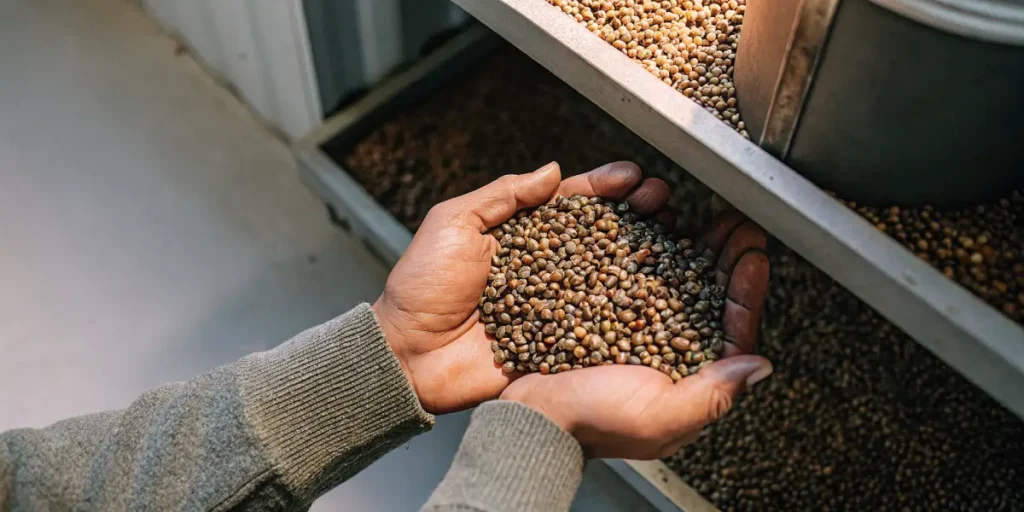
How to Germinate & Propagate Auto Kerosene Krash
Auto Kerosene Krash is a remarkable autoflowering strain, known for its robust growth characteristics and distinctive aromatic profile. Germinating these seeds properly is the first vital step in ensuring a healthy crop. Start by selecting high-quality seeds; look for seeds that are firm and dark in color. Begin the germination process by soaking your seeds in a glass of room temperature water for approximately 12 to 24 hours. This soaking helps to kickstart the germination process by softening the hard outer shell of the seeds.
After soaking, transfer the seeds to a damp paper towel for continued germination. Place the seeds between two layers of moistened paper towel, ensuring they maintain consistent moisture levels without being overly saturated. Insert the paper towel in a plastic container or a resealable plastic bag to create a mini-greenhouse effect. It’s essential to keep this setup in a warm, dark place, ideally at temperatures between 70 to 85 degrees Fahrenheit. Within 48 to 72 hours, you should notice the emergence of tiny taproots.
Once the taproots appear, it is time to carefully plant the germinated seeds. Prepare small pots filled with a light, airy seed-starting mix. Using a pencil or a similar tool, create shallow holes about a quarter-inch deep. Position each seed taproot-down into the holes and gently cover them with soil. Lightly water the soil to maintain moisture, but be cautious of overwatering, which can lead to root rot. Place the pots under a light source and maintain a consistent temperature to encourage robust seedling growth.
Propagation of Auto Kerosene Krash involves nurturing these young plants to maturity. As these seeds are autoflowering, they will transition to the flowering stage based on age rather than light cycle changes. Ensure the seedlings receive ample light—at least 18 hours a day for optimal growth. Monitor for pests and disease, and maintain ideal humidity levels to support vigorous development. With thorough care during germination and propagation, growers can expect a healthy, aromatic harvest of Auto Kerosene Krash.
Vegetative Stage
The vegetative stage is a critical period for your Auto Kerosene Krash plants, during which they develop the foundational structures necessary for a robust flowering phase. This phase typically lasts for about 4 to 6 weeks but can vary based on environmental conditions and care practices. Ensuring that the plants receive the right amount of light is crucial. Since Auto Kerosene Krash is an autoflowering strain, maintaining a consistent light schedule of 18-24 hours of light per day will maximize growth without the need for altering light cycles as is required for photoperiod strains.
During this phase, providing your plants with adequate nutrients is essential for strong, healthy growth. Auto Kerosene Krash plants, like most cannabis strains, require a diet rich in nitrogen, phosphorus, and potassium during the vegetative stage. Using a balanced N-P-K fertilizer, where nitrogen levels are slightly higher, will encourage lush foliage development. It’s equally important to monitor the plants for any signs of deficiency or nutrient burn, making adjustments to your feeding schedule or nutrient mix as necessary.
Training techniques such as low-stress training (LST) can be beneficial during the vegetative stage for Auto Kerosene Krash. LST involves gently bending and tying down the stem and branches to promote horizontal growth and improve light penetration to lower bud sites, thus potentially increasing yield. Care should be taken to avoid stressing the plants too much, as autoflowering varieties like Auto Kerosene Krash have limited time in veg to recover from damage.
Besides to light and nutrients, maintaining the right environmental conditions is crucial for optimal growth. The ideal temperature for Auto Kerosene Krash during the vegetative stage is between 70-85°F (21-29°C), with relative humidity hovering around 40-70%. Good airflow and ventilation will help prevent mold and pests, ensuring your plants remain healthy and vigorous throughout this stage. Observing these fundamentals will greatly enhance the success of your Auto Kerosene Krash grow.
Flowering: What to Expect
Auto Kerosene Krash is an autoflowering cannabis strain known for its exceptional resilience and robust growth, making it a favorite among both novice and seasoned growers. When this strain enters its flowering stage, cultivators can anticipate a rapid transformation characterized by dense bud production and a notable increase in aromatic intensity. Typically, the flowering phase begins approximately three to four weeks after germination, depending on the growing conditions and genetic factors. As the plant progresses through this phase, growers will observe a significant change in the plant’s structure and appearance.
During the flowering stage of Auto Kerosene Krash, expect the plant to reach its full potential in terms of height and width. While this strain is generally compact, it will produce a bountiful yield through its hardy branches and copious bud sites. A defining feature of Auto Kerosene Krash is its sizable, resinous buds that glisten with trichomes, signaling the high potency for which it is famed. Cultivators should ensure that the plants receive sufficient light and nutrients to support this vigorous growth, as inadequate resources may hinder bud development and overall yield.
Another aspect to consider during the flowering period is the fragrance that Auto Kerosene Krash emits. The strain is named ‘Kerosene’ due to its pungent, diesel-like aroma that becomes more pronounced as flowering progresses. This can sometimes pose a challenge, especially for indoor growers who must implement proper ventilation systems or activated carbon filters to manage the odor effectively. As the harvest time nears, growers can expect a complex bouquet of earthy, sharp scents that complement the strain’s robust terpene profile.
The flowering stage of Auto Kerosene Krash typically lasts around 8-9 weeks. During the final weeks, it’s crucial to watch for signs that the plant is ready for harvest, such as the darkening of pistils and milky or amber trichomes. Regular inspection with a magnifying tool can aid in determining the optimal harvest time, ultimately maximizing the strain’s THC content and preserving its rich, unique flavors. Cultivators should be prepared for a rewarding harvest, rich in high-quality, potent buds that accurately reflect the distinctive and exhilarating characteristics of Auto Kerosene Krash.
Fertilizers & Nutrient Schedule
Growing auto Kerosene Krash successfully requires careful attention to its nutrient needs, which are crucial for optimum growth and potent yields. This autoflowering strain is known for its robust scent and intense effects, and to achieve these hallmark characteristics, a balanced feeding regimen is essential. Starting with a high-quality substrate is the first step. Many growers recommend a well-aerated soil mix or coco coir as a medium, supplemented with perlite to boost drainage and oxygen intake. This foundation will significantly aid nutrient uptake, allowing your plants to thrive.
In the vegetative phase, auto Kerosene Krash benefits from a nutrient mix favoring nitrogen to promote lush foliage development. A well-formulated cannabis-specific fertilizer containing macro and micronutrients is recommended. Typically, a nutrient solution with a nitrogen, phosphorus, and potassium (N-P-K) ratio around 3-1-2 works effectively. Apply nutrients lightly at first to understand your plant’s specific tolerance and gradually increase to recommended levels as it matures. Keeping an eye on the plant’s response is crucial; signs of nutrient burn, such as leaf tips turning brown, indicate the need to adjust concentrations accordingly.
As your plants transition into the flowering stage, it’s imperative to adjust the nutrient balance. Auto Kerosene Krash should be gradually weaned off higher nitrogen levels in favor of increased phosphorus and potassium to support bud formation and resin production. A formulation with an N-P-K ratio around 1-3-2 is often effective during this stage. Additionally, incorporating a bloom stimulator or booster can enhance terpene profiles and cannabinoid concentration, leading to a more potent yield. Regular monitoring of pH levels in your water and nutrient solution (aiming for an optimal range of 6.0-6.5) will ensure that all nutrients are available to the roots.
Throughout the entire growth cycle, regular watering without nutrients (also known as flushing) is recommended, especially if using synthetic fertilizers. This practice aids in preventing salt build-up around the roots, which can lead to nutrient lockout and stunted plant growth. As the harvest time nears, a final flush with plain water or a commercial flushing agent can help clear out residual nutrients, ensuring the final product is clean and smooth to smoke. By closely following a thoughtful nutrient schedule, growers can look forward to a rewarding harvest of rich, aromatic auto Kerosene Krash.
Pest and Disease Prevention for Healthy Cannabis Plants
Growing Auto Kerosene Krash, like any cannabis strain, demands vigilant attention to pest and disease prevention to ensure healthy and fruitful plants. The first line of defense is maintaining a clean growing environment. Regularly clean your growing space, removing any debris, dead leaves, or plant material that could harbor pests or pathogens. Use sterile tools when pruning or handling plants to prevent the spread of contaminants. Ensuring that your grow space is free from clutter will reduce hiding spots for pests and make routine inspections more manageable.
Implementing a prevention-focused integrated pest management (IPM) strategy is advisable. Begin with selecting pest-resistant strains and healthy seed stock. Incorporate beneficial insects such as ladybugs and predatory mites, which can naturally manage pest populations. Establishing a routine for monitoring your plants will help you catch any issues early. Look closely at the underside of leaves, the stems, and the soil surface for any signs of pests like spider mites, aphids, or thrips. Early detection can prevent small problems from becoming infestations.
Proper plant health and vigor can also stave off disease and hinder pest establishment. This includes supplying your Auto Kerosene Krash with adequate nutrients, ensuring proper watering practices, and maintaining optimal temperature and humidity levels tailored to this strain’s requirements. Overwatering or nutrient imbalances can stress plants, making them more susceptible to diseases such as root rot, powdery mildew, or bud rot. Ensure good airflow around your plants as proper ventilation can minimize the risk of mold and funguses taking hold.
Lastly, consider utilizing organic or chemical treatments only when other methods haven’t sufficed. Natural repellents or pesticides, applied carefully, can offer additional protection but should be used with caution. It is crucial for growers to follow product instructions closely and ensure any treatments are safe for cannabis plants, especially when nearing the harvest period. With diligent care and preventive measures, your Auto Kerosene Krash cultivation will yield robust plants and high-quality buds.
Harvesting & Drying auto kerosene krash the Right Way
When it comes to auto kerosene krash, timing your harvest is crucial to maximizing the potency and flavor of your yield. This strain typically has a short flowering period of around 8 to 10 weeks. The best indicator that your auto kerosene krash is ready for harvesting is the appearance of the trichomes. Begin your harvesting process when the trichomes on the buds have turned a milky white with about 10% turning amber, which is generally indicative of peak THC levels. It’s important to harvest at the right time to ensure you capitalize on the auto kerosene krash’s unique terpene profile, which includes gas and fuel-like undertones characteristic of its kerosene lineage.
Once you’ve determined that your auto kerosene krash plants are ready for harvest, the next step is to cut them down with care to maintain bud integrity. It’s advisable to use sharp, clean tools to minimize any damage or contamination. Begin by removing the large fan leaves, as these contain fewer cannabinoids and will aid in the drying process. You may opt for a wet or dry trimming method; however, for beginners, it’s often easier to trim the fan leaves right after harvest, while the plant is still moist.
Drying your auto kerosene krash properly is essential for preserving potency and flavor, preventing mold, and achieving a smooth smoke. An ideal drying environment is a dark room with temperatures between 60-70°F (15-21°C) and relative humidity levels at 50-60%. Hang your trimmed plants upside down to allow the moisture to evenly distribute. This process typically takes about 7 to 10 days, depending on environmental conditions. A well-dried cannabis bud should feel dry to the touch but not brittle. Ensure you monitor your drying environment closely to avoid over-drying, which can negatively impact the cannabinoid and terpene content of your auto kerosene krash.
After the initial drying period, it’s time to cure your auto kerosene krash buds to enhance their flavor and potency further. Place the dried buds in airtight glass jars, filling them to 75% capacity to allow for some airflow, which aids in minimizing moisture build-up that can lead to mold. Store these jars in a cool, dark place, and open them daily for the first week to release excess moisture and introduce fresh air — a process known as “burping”. Curing should last at least two to four weeks; however, extending this process can significantly improve the quality of the final product.
By following these meticulous harvesting and drying steps tailored specifically for auto kerosene krash, you ensure a premium end product teeming with the strain’s signature unique aromas and potency. Taking the time to properly cure your cannabis rewards you with smoother, more flavorful smoke, making the cultivation process truly gratifying. Remember that each grow cycle offers learning opportunities to refine these practices and achieve superior results with each successive harvest.
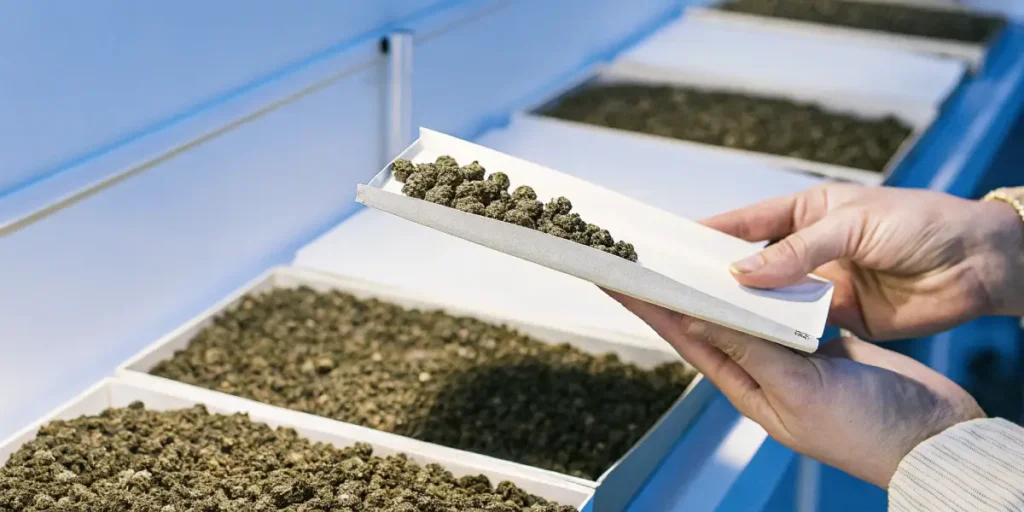
Auto kerosene krash Strain Type: Indica, Sativa or Hybrid?
Auto Kerosene Krash is a fascinating cannabis strain that falls under the category of a hybrid. This particular strain is intricately designed by combining the genetics of powerful Indica and Sativa strains to deliver a balanced and versatile experience. It offers users a remarkable blend of effects, catering to both the uplifting and cerebral qualities typical of Sativas, as well as the soothing, full-bodied effects commonly associated with Indicas. As a hybrid, Auto Kerosene Krash serves a dual purpose, delivering a comprehensive experience for various consumer needs.
One of the most notable features of Auto Kerosene Krash is its ability to induce a state of deep relaxation, a characteristic most often found in Indica-dominant strains. This makes it particularly appealing to users seeking relief from stress, anxiety, or physical discomfort. Simultaneously, the Sativa influences introduce an energizing and mood-enhancing element to the strain, which can boost creativity and focus, making it an excellent choice for daytime use or social interactions. This balance allows Auto Kerosene Krash to cater to a broad audience, from those seeking therapeutic effects to recreational users who appreciate a dynamic and adaptable high.
The hybrid nature of Auto Kerosene Krash is further exemplified in its cultivation characteristics. The strain inherits the robust, hearty growth patterns of Indicas, which are known for their bushy stature and resilience. At the same time, the Sativa influence contributes to a more elongated growth structure, resulting in a balanced plant that is accessible for growers of all skill levels. This combination not only makes Auto Kerosene Krash an attractive option for cultivators seeking a rewarding yield, but it also ensures a rich sensory experience with fragrant notes and potent effects for consumers. This hybrid strain certainly stands out in the cannabis landscape, offering a complementary set of attributes that appeal to a diverse range of users and growers alike.
Why Grow auto kerosene krash? Key Benefits for Cultivators
Auto Kerosene Krash is a popular strain among cannabis cultivators due to its unique blend of quality, speed, and yield potential. One of the primary advantages of this strain is its autoflowering nature, which makes it ideal for both novice and experienced growers. Unlike photoperiod strains, Auto Kerosene Krash does not rely on light cycles to initiate flowering. This characteristic allows for greater flexibility in cultivation and can lead to multiple harvests in a single growing season. Cultivators who value efficiency and ease of management will find this strain particularly appealing.
Another significant benefit of Auto Kerosene Krash is its robust resilience and adaptability. This strain is bred to withstand a variety of environmental conditions, making it suitable for both indoor and outdoor cultivation. Its resilience to pests and mold reduces the need for constant monitoring and chemical interventions, which can be burdensome for some growers. This hardiness results in healthier plants and a higher success rate, even in less-than-ideal growing conditions. The strain’s ability to thrive in different environments increases the likelihood of a successful harvest, making it a reliable choice for cultivators.
In addition to its growing advantages, Auto Kerosene Krash is highly regarded for its potent effects and aromatic profile. It features a rich terpene profile with hints of diesel, earth, and a subtle sweetness, providing a satisfying sensory experience. The high THC content offers strong psychoactive effects, making it a favorite for those seeking powerful recreational or therapeutic outcomes. By cultivating Auto Kerosene Krash, growers can ensure a product that is not only rewarding to grow but also highly desirable in the competitive cannabis market.
Finally, the yield potential of Auto Kerosene Krash is impressive for an autoflowering strain. With optimal care, it can produce generous quantities of dense, resinous buds, maximizing the return on a cultivator’s investment. This high-yielding characteristic is crucial for commercial growers aiming to maximize profitability while maintaining product quality. The combination of ease of growth, resilience, and quality output makes Auto Kerosene Krash a compelling choice for cultivators aiming to achieve both efficiency and excellence in their cannabis production.
Potential Challenges When Growing Auto Kerosene Krash
Growing Auto Kerosene Krash can be a rewarding endeavor, but it comes with its own set of challenges that growers need to be aware of. One of the primary issues is the plant’s sensitivity to nutrient levels. Auto Kerosene Krash, like many autoflower strains, has a limited tolerance for overfeeding, particularly during the early stages of its growth cycle. Over-fertilization can lead to nutrient burn, stunting growth, and reducing yield. It’s crucial for growers to monitor their feeding schedules carefully and opt for a lower nutrient concentration to prevent this issue.
Another significant challenge when cultivating Auto Kerosene Krash is managing its light cycle. Although autoflowering strains typically do not depend on light cycles to begin flowering, fluctuations in light exposure can impact the plant’s health and growth. Ensuring a consistent light schedule helps optimize growth and ultimately influences the yield quality. Growers often opt for a stable 18/6 light cycle to maximize the potential of the plant. However, any disruptions in this schedule or inadequate lighting can result in stunted growth or underdeveloped buds.
Additionally, temperature and humidity control can pose challenges when growing Auto Kerosene Krash. This strain thrives in a balanced environment where the temperature is consistently between 20-26°C (68-79°F). Fluctuations outside of this range can cause stress and impact both growth and flowering. Similarly, humidity levels should be carefully maintained, particularly during the flowering stage when excessive moisture can lead to mold and mildew growth. Investing in a reliable climate control system is recommended for mitigating these challenges and promoting healthy plant development.
Cultivating Auto Kerosene Krash also requires attention to pest and disease management. This strain, like all cannabis plants, is vulnerable to common threats such as spider mites, aphids, and root rot. Regular inspections and preventative measures, including the use of natural repellents and maintaining cleanliness in the growing environment, are essential to protect the plants. Failing to address these issues promptly can lead to significant plant damage or loss, impacting the overall harvest.
Finally, due to its rapid growth cycle, growers need to remain vigilant throughout the life of Auto Kerosene Krash. The fast turnover from seed to harvest leaves little room for error, necessitating careful planning and proactive measures to ensure each phase, from germination to flowering, progresses smoothly. By acknowledging these potential challenges and preparing accordingly, cultivators can enhance their chances of successfully growing this unique and potent strain.
Is Auto Kerosene Krash Worth Buying? Here’s What You Need to Know
Auto Kerosene Krash is a celebrated autoflowering strain that stands out for its robust growth characteristics and distinctive aromatic profile. The strain, a cross of the potent Kerosene and the unique autoflowering genetics, offers growers a reliable and relatively easy cultivation journey. Known for its resilience, Auto Kerosene Krash can handle various growing conditions, making it an appealing choice for both novice and experienced growers. Its compact stature and rapid growth cycle, completing in about 8-10 weeks from germination, make it particularly appealing for those seeking a quick, yet rewarding harvest.
Further enhancing its appeal is the strain’s impressive yield and high THC content, typically ranging from 16% to 20%, which provides a powerful and long-lasting high. It’s celebrated for delivering effects that are both relaxing and euphoric, making it suitable for recreational and medicinal use. This versatility is beneficial for consumers seeking relief from stress, pain, or insomnia, without being overwhelming. The rich terpene profile, offering notes of diesel and earthy undertones, combined with subtle citrus and pine hints, provides a sensory experience that captivates the user from the first puff.
When considering whether Auto Kerosene Krash is worth buying, potential buyers should weigh its resilience, potency, and yield against its specific growing and consumption needs. Given its robust performance and unique characteristics, this strain represents a compelling option for growers aiming to maximize their results in a limited timeframe. Additionally, its distinctive flavor and potent effects make it a standout in the market. For those looking to experiment with a high-quality, autoflowering strain, Auto Kerosene Krash represents a worthwhile investment that aligns quality with consistent and enjoyable outcomes.
FAQs about Auto Kerosene Krash
What is Auto Kerosene Krash?
Auto Kerosene Krash refers to a specific event or phenomenon involving the unexpected drop in the demand or supply chain of kerosene, particularly affecting the automotive industry. This could involve fluctuations in prices, supply shortages, or transitions towards alternative fuels, impacting logistics and operational costs. Knowing the specifics requires analyzing market conditions, regulatory changes, and technological advancements affecting the fuel sector.
How does Auto Kerosene Krash impact the automotive industry?
The Auto Kerosene Krash can significantly affect the automotive industry by altering the cost structure and logistics of fuel supply. Automotive companies could face increased fuel costs, necessitating shifts in pricing strategies or cuts in other areas. It may also drive investment towards research in fuel-efficient technologies or alternative energy sources to mitigate dependency on kerosene, impacting future industry trends and consumer offerings.
What factors contribute to an Auto Kerosene Krash?
Several factors can contribute to an Auto Kerosene Krash, including geopolitical events affecting oil production, changes in regulatory policies, advancements in energy technology, and shifts in consumer behavior towards sustainability. Economic disruptions, such as global recessions, can also play a crucial role, as they may influence both consumer demand for petroleum products and strategic decisions within the industry about fuel utilization.
How can companies prepare for an Auto Kerosene Krash?
Companies can prepare for an Auto Kerosene Krash by diversifying their energy sources and investing in renewable technologies, thus reducing reliance on kerosene. They should also establish strong supply chain partnerships to ensure flexibility in fuel procurement. Risk assessment strategies and contingency planning, such as maintaining reserves or fuel hedging, can further protect against sudden market shifts. Additionally, companies should stay informed about industry trends and policies that may signal an impending krash.
Are there alternative fuels that can replace kerosene in the automotive sector?
Yes, there are several alternative fuels that can replace kerosene in the automotive sector, including electricity, biodiesel, ethanol, and hydrogen. Electric vehicles (EVs) are gaining traction due to their efficiency and lower environmental impact. Biodiesel and ethanol are renewable fuels derived from plant or animal products. Hydrogen fuel cells offer a high energy density with zero emissions. Transitioning to these alternatives can mitigate the risks associated with a kerosene krash while advancing sustainability goals.

